Content
All issues / Volume 16 (2022) / Issue 5 (May)
Sanjay Mavinkere Rangappa, Suchart Siengchin
Vol. 16., No.5., Pages 451-452, 2022
DOI: 10.3144/expresspolymlett.2022.33
Vol. 16., No.5., Pages 451-452, 2022
DOI: 10.3144/expresspolymlett.2022.33
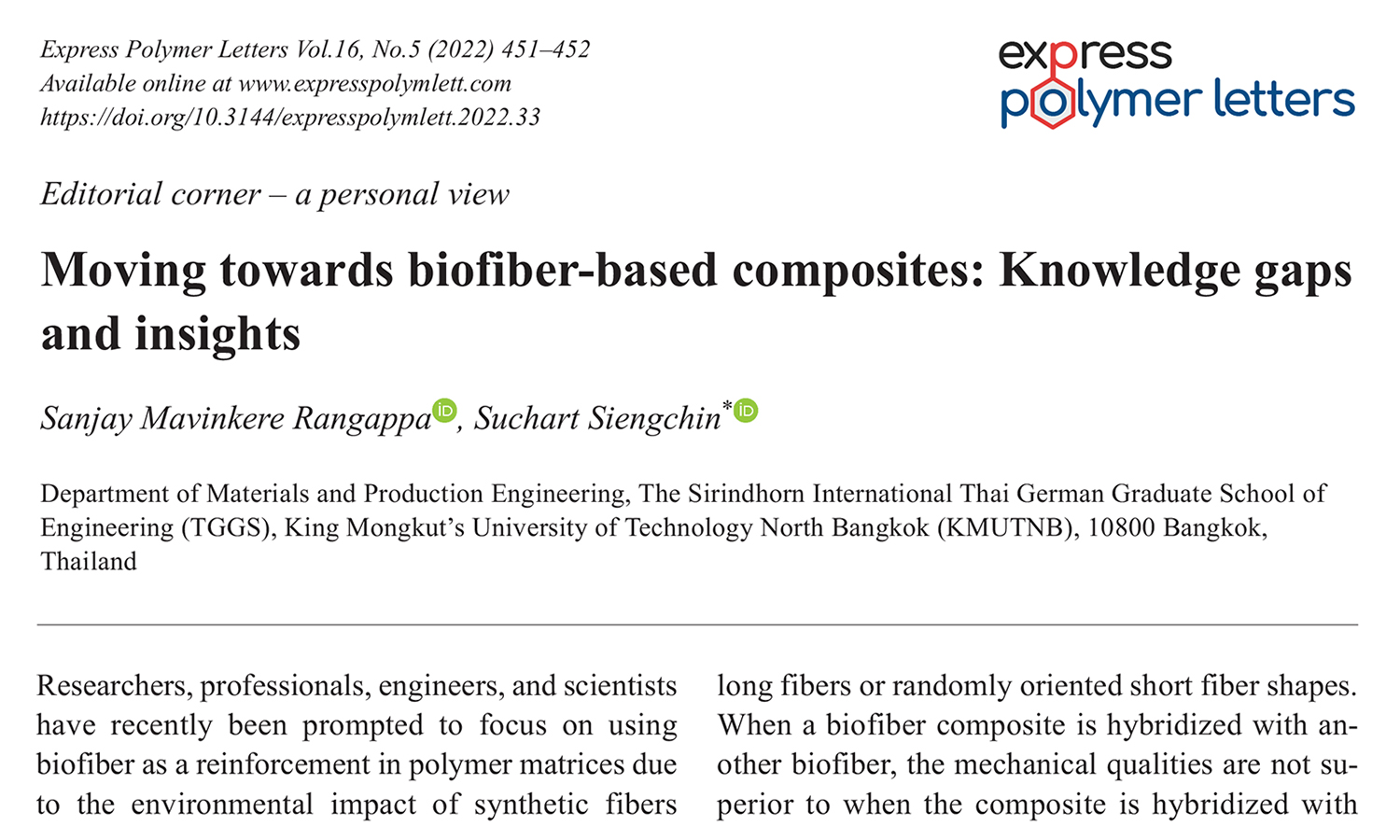
This is an editorial article. It has no abstract.
Lenka Gajzlerova, Jana Navratilova, Sona Zenzingerova, David Jaska, Lubomir Benicek, Michal Kudlacek, Roman Cermak, Martin Obadal
Vol. 16., No.5., Pages 453-464, 2022
DOI: 10.3144/expresspolymlett.2022.34
Vol. 16., No.5., Pages 453-464, 2022
DOI: 10.3144/expresspolymlett.2022.34
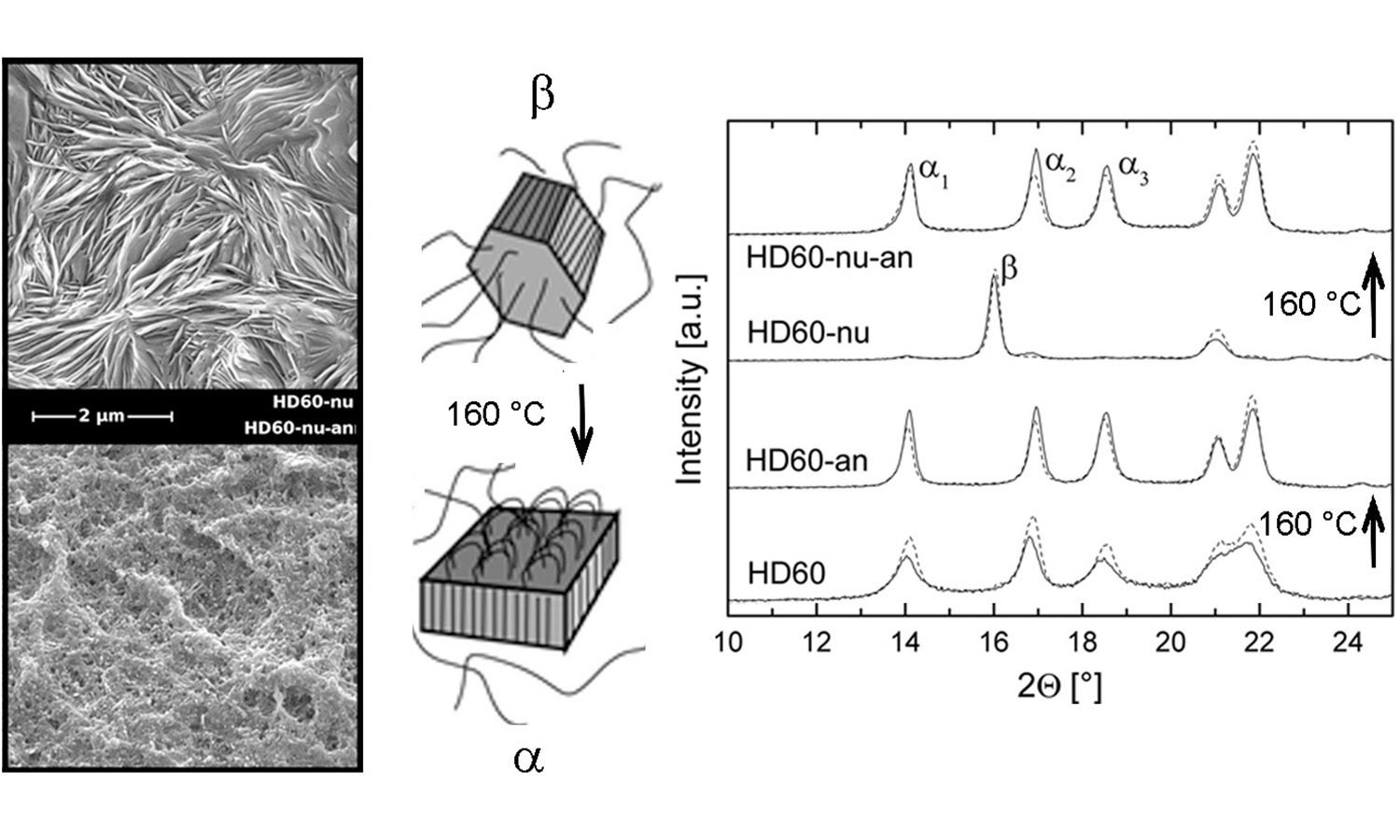
The effect of isotactic polypropylene (iPP) molecular weight and thermal treatment on final crystalline structure and mechanical properties were investigated by X-ray scattering, differential scanning calorimetry, tensile testing, and scanning electron microscopy. Neat and β-nucleated isotactic polypropylene were subjected to annealing above melting temperature of β-phase but still below melting temperature of α-phase, which caused both improvement of α crystallites and β to α-recrystallization, in case of nucleated material. As a consequence, the final mechanical properties like tensile strength and stiffness improved significantly. The increase is much more pronounced in the case of β to α-transformed materials with lower molecular weight. This phenomenon can also be attributed to the partial preservation of the specific structure of the amorphous phase present in β-nucleated polypropylene, in addition to the perfection of the crystalline phase. The amorphous phase comprises many interconnecting chains passing through several lamellae whereby providing a long-range effect.
Zbigniew Grobelny, Justyna Jurek-Suliga, Sylwia Golba
Vol. 16., No.5., Pages 465-475, 2022
DOI: 10.3144/expresspolymlett.2022.35
Vol. 16., No.5., Pages 465-475, 2022
DOI: 10.3144/expresspolymlett.2022.35
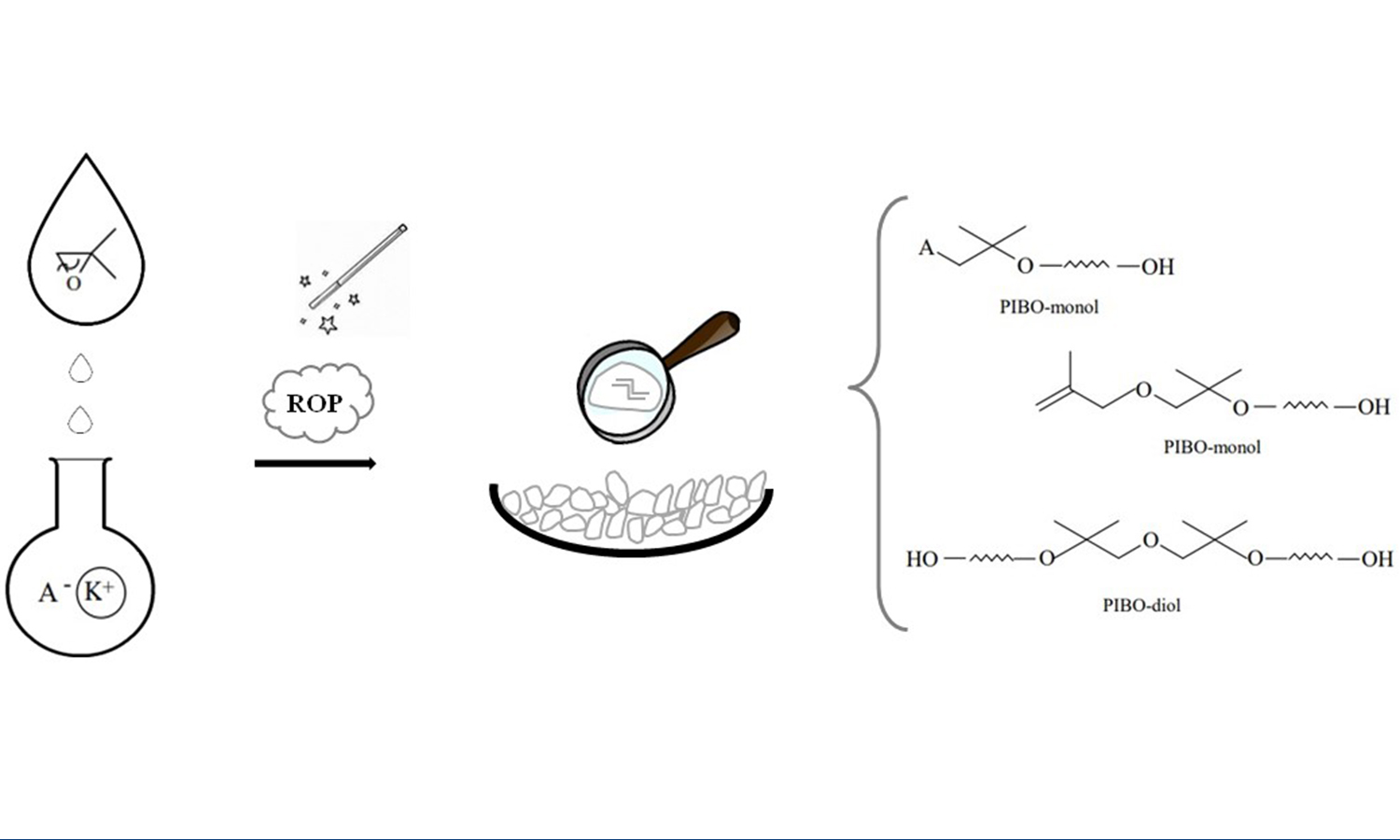
Various potassium salts, i.e., KOH, HOC3H6OC3H6OK, CH3OK, i-PrOK, t-BuOK, CbK, and (Me3Si)2NK activated by 18-crown-6 appeared to be active initiators of first anionic polymerization of isobutylene oxide. The processes
were performed in mild conditions, i.e., tetrahydrofuran solution at room temperature under normal pressure. The polymers obtained are polyether-monols or -diols also containing macromolecules with starting groups having double bonds (12.5–46.6 mol%). It was stated that polymer unsaturation results not only from chain transfer reaction to monomer but mainly from deprotonation of monomer by an initiator, which behaves in the polymerizations as nucleophilic bases. In all systems, isomerization of the double bonds is also observed. Most of the obtained polymers are crystalline, insoluble materials with crystalline content up to 52.47% for a derived sample with potassium i-propoxide as initiator. The proneness of the polyisobutylene oxide to form crystal–type package is influenced by the average molar mass of the polymers. They are bimodal with Mn = 400–1300 (Mcalc = 1440) and very low dispersities (Mw/Mn = 1.01–1.12). 13C NMR, MALDI-TOF, FTIR, SEC, XRD, and DSC techniques were used for polymers analysis. A mechanism of the processes studied was proposed.
Najoua Barhoumi, Abdelkarim Ghanem, Mariem Koudhai, Kaouther Khlifi, Mohamed Ali Terras
Vol. 16., No.5., Pages 476-487, 2022
DOI: 10.3144/expresspolymlett.2022.36
Vol. 16., No.5., Pages 476-487, 2022
DOI: 10.3144/expresspolymlett.2022.36
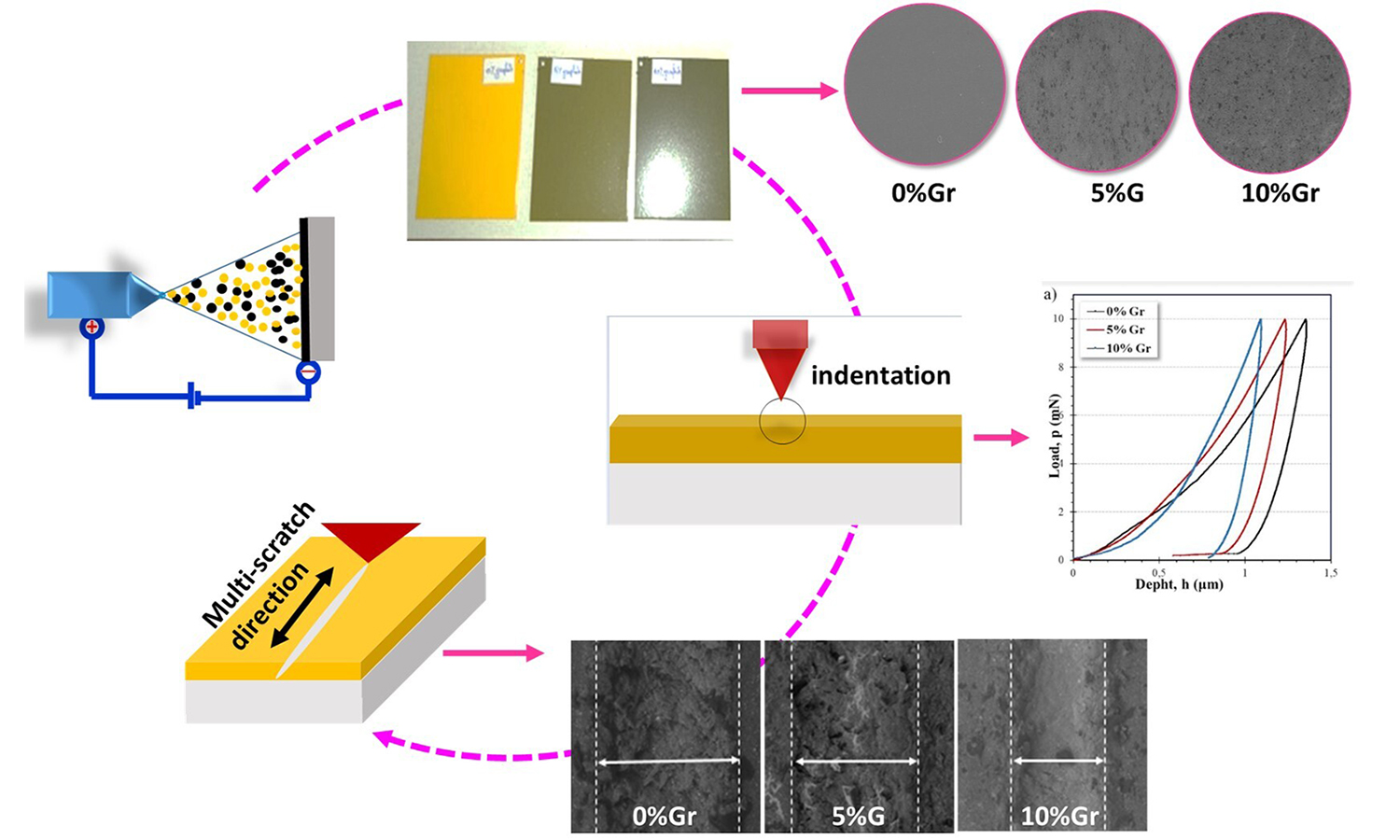
Organic polymer coatings have been extensively used for painting in industrial applications to prevent the deleterious effects on the metallic components. In this study, electrostatic polyester coatings with two amounts of graphite (5 and 10 wt% Gr) were deposited on structural steel substrate. The effect of Gr addition on the microstructure, mechanical, adhesion and tribological behavior were characterized using SEM, EDS, XRD, nano-indentation and scratch test. The coatings’ resistance to corrosion was investigated using electrochemical measurements in 3.5 wt% NaCl solution. According to the results, the Gr particles were homogeneously distributed throughout the polyester coatings. The hardness and elastic modulus of the polyester coatings increased from ~0.23 and ~6.7 to ~0.68 and 10.9 GPa upon increasing the Gr contents from 0 to 10 wt% Gr, respectively. Moreover, the friction coefficient decreased from ~0.5 to ~0.2. The results also showed an attenuation of the severe wear mechanism and a reduction of the plastic deformation. Consequently, the wear resistance improved by three times due to the lubricating role of Gr. All the coatings showed a high adhesion level to the steel substrate with a cohesive critical load higher than Lc1 = ~7 N and an adhesion strength greater than σc = ~215 MPa. The incorporation of Gr allows high protection of the steel against corrosion due to their barrier role.
Jonathon Tanks, Yoshihiko Arao, Masatoshi Kubouchi
Vol. 16., No.5., Pages 488-499, 2022
DOI: 10.3144/expresspolymlett.2022.37
Vol. 16., No.5., Pages 488-499, 2022
DOI: 10.3144/expresspolymlett.2022.37
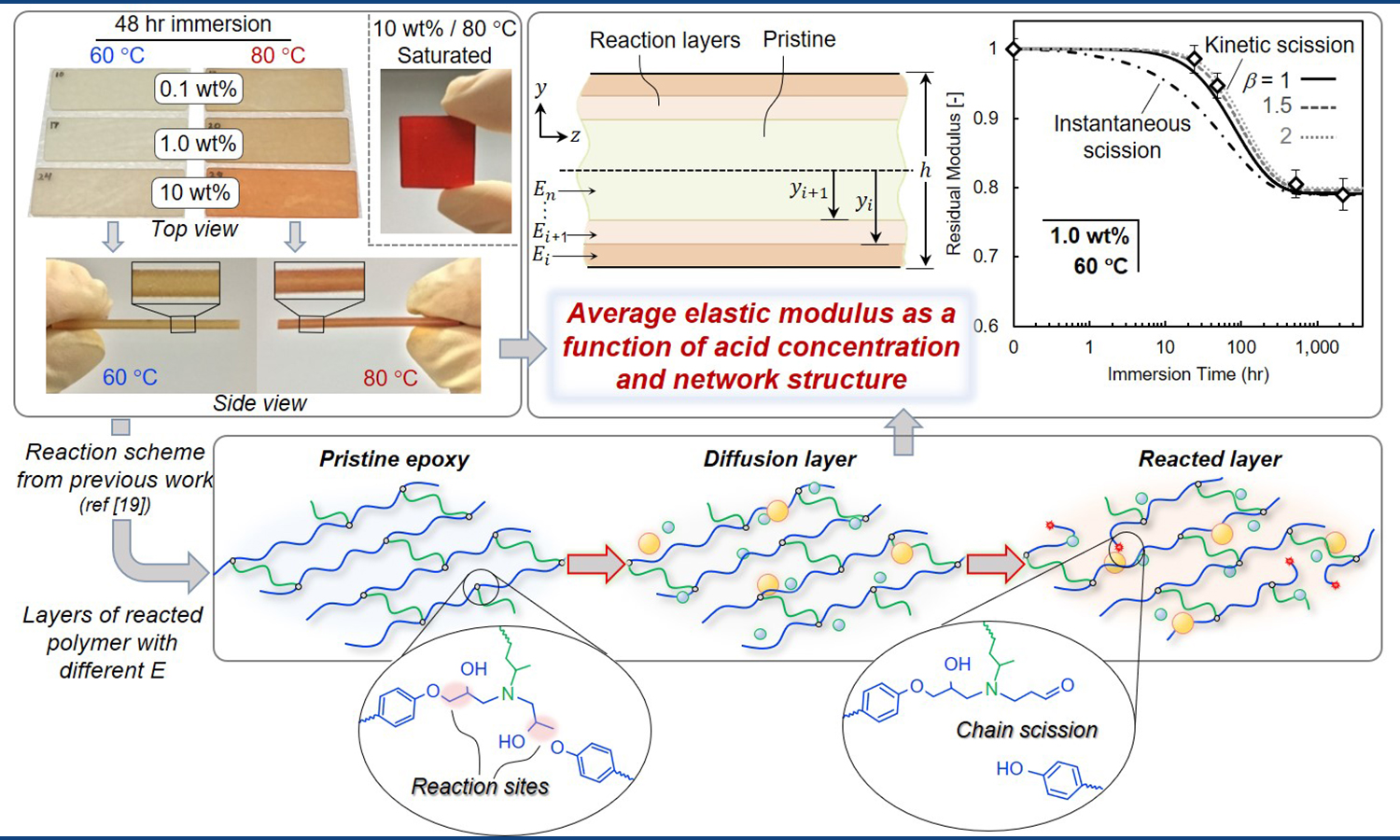
Amine-crosslinked epoxy resins represent a large fraction of polymers used in structural and coating applications, meaning the characterization and modeling of environmental durability and mechanical reliability is of utmost importance. In particular, chemical storage tanks, sewage systems, and oil/gas infrastructure involve prolonged exposure to organic and inorganic acids. However, the majority of meso-scale models for polymer network degradation are more appropriate for hydrogels than stiff thermosets; meanwhile, other models developed for acid degradation of ester-containing networks are not applicable to amine-cured epoxies due to the assumption that crosslink density decreases. In this paper, we report the acid uptake and subsequent degradation behavior of bisphenol-F epoxy cured with an aliphatic amine, as well as propose a simple but physically meaningful model for an ideal 2D network that effectively relates acid uptake and polymer structure to the decrease in elastic properties over time. Parameters include crosslink density and acid penetration rate, and the only best-fit parameter is the reaction rate constant. This analysis can be extended to more complex network structures and environmental conditions to model neat resins and composites.
Gheffar Kh. Kara, Azadeh Tadjarodi
Vol. 16., No.5., Pages 500-523, 2022
DOI: 10.3144/expresspolymlett.2022.38
Vol. 16., No.5., Pages 500-523, 2022
DOI: 10.3144/expresspolymlett.2022.38
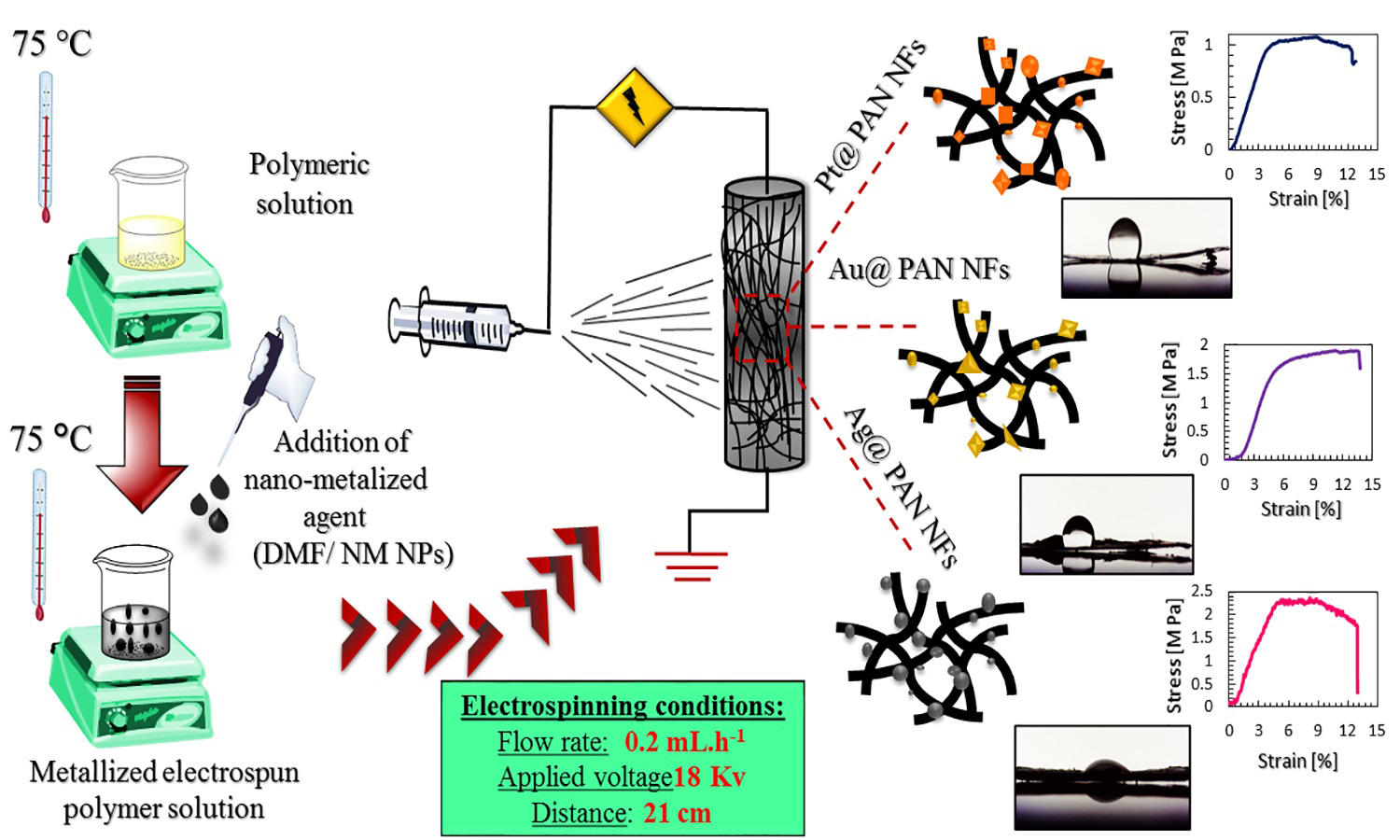
In this research, the surface of polyacrylonitrile NFs, PAN NFs, was metalized by three noble metal nanoparticles, NM NPs, (Pt, Au, and Ag NPs, as known metalized agents) via a safe experimental protocol. Crystalline measurements showed that all traits of ‘PAN(1 0 0)’ were changed after the metallization process. An interconnection between the metallic particles and PAN possessed not only a good role in increasing the stability of the PAN chain but also in the dispersion of those over its surface, confirmed by FTIR, EDX data, and TEM images. The mechanical properties and wettability surface were tested, and results show that the nature of metalized agent clearly influences it. Owing to findings, all related values for two tests of PAN NFs increased after loading Ag NPs on its surface, but not by Pt NPs, due to the good synergistic correlation between structural features of Ag@ PAN NFs. The main focus of this paper is to study the synergistic relationship between the physical properties, according to the surficial changes of PAN NFs after metallization, and the alteration of mechanical and wetting behaviors.
Bin Wang, Qiaolie Zheng, Mengjia Li, Sisi Wang, Shanglin Xiao, Xiping Li, Hesheng Liu
Vol. 16., No.5., Pages 524-539, 2022
DOI: 10.3144/expresspolymlett.2022.39
Vol. 16., No.5., Pages 524-539, 2022
DOI: 10.3144/expresspolymlett.2022.39

Vinylsilane grafted carbon nanotubes (VCNTs) can act as reactive compatibilizers for cocontinuous poly(lactic acid)/high-density polyethylene (PLA/HDPE) blends, with the aid of organic peroxides initiated radical reactions. The reactively compatibilized PLA/HDPE/VCNTs blend nanocomposites exhibit strong interfacial interactions, as can be reflected by the remarkably increased storage modulus at low frequencies. Due to strong interfacial interactions, the VCNTs act as highly efficient nucleating agents for the PLA component. With 2.0 wt% of VCNTs, the crystallinity of PLA component reaches a value of 33.8% after melt cooling, and thus cold crystallization can no longer be observed upon heating. Thanks to the high crystallinity of the PLA component, the reactively compatibilized blend nanocomposite with 2.0 wt% of VCNTs shows a much higher elastic modulus than those of pristine PLA/HDPE blends and uncompatibilized blend nanocomposites in the temperature range of 60 to 80°C. Moreover, the reactively compatibilized blend nanocomposites exhibit an obvious increase trend in tensile strength with increasing the content of VCNTs, due to stronger interfacial interactions. This work provides a generic strategy for compatibilizing and reinforcing immiscible polymer blend nanocomposites using reactive carbon nanotubes.
Azizon Kaesaman, Hasleena Boontawee, Sopa Chewchanwuttiwong, Charoen Nakason
Vol. 16., No.5., Pages 540-556, 2022
DOI: 10.3144/expresspolymlett.2022.40
Vol. 16., No.5., Pages 540-556, 2022
DOI: 10.3144/expresspolymlett.2022.40
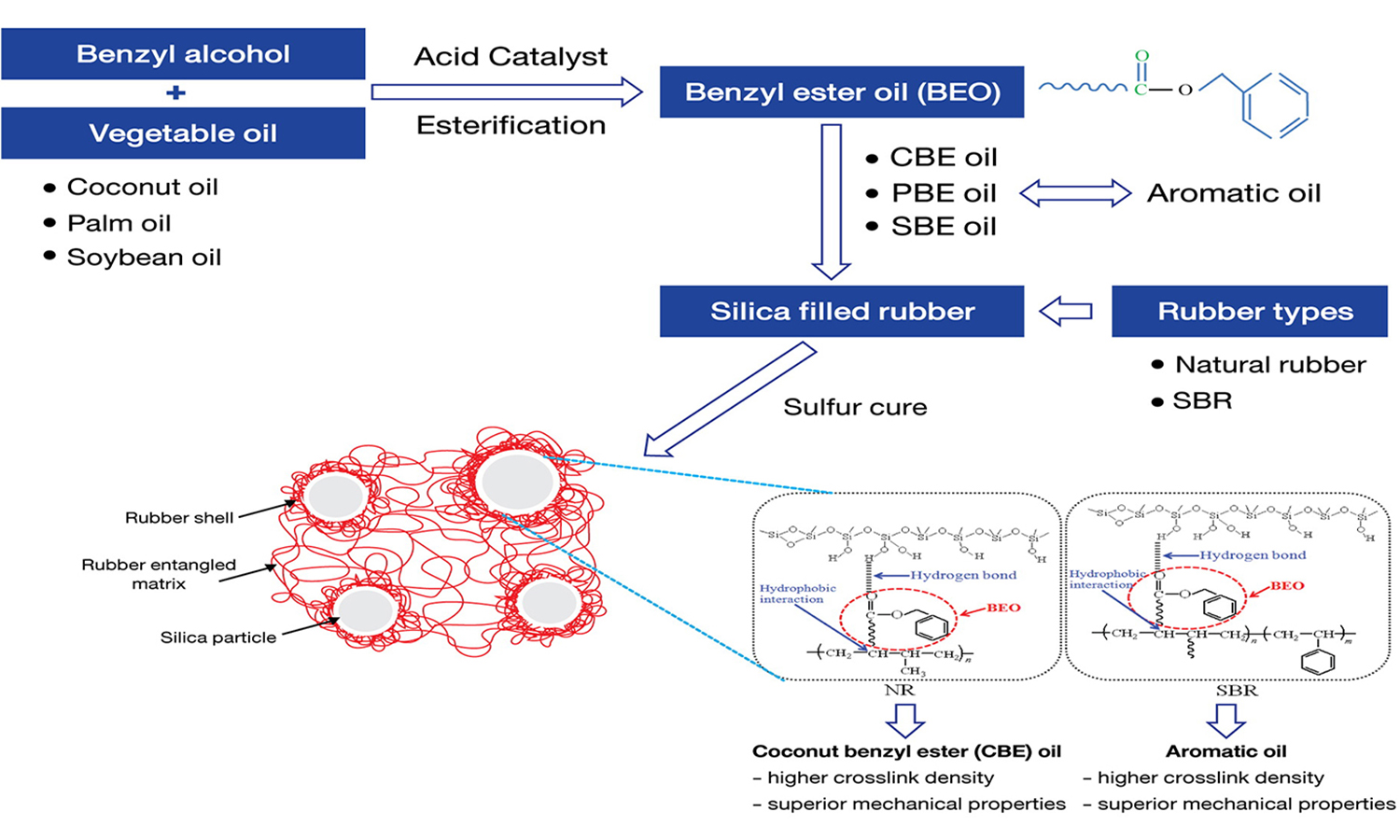
Benzyl ester oils (BEO) were prepared by esterification of fatty acids from three different types of vegetable oils, i.e., coconut, palm, and soybean oils using benzyl alcohol in the presence of an acid catalyst. They are then exploited as alternative rubber processing oils with the main aim to replace conventional aromatic oil. The influence of BEO on mixing, curing, viscosity, crosslink density, dynamic and mechanical properties is investigated in silica-filled natural rubber (NR) and styrene butadiene rubber (SBR) compounds. The rubber compounds with BEO exhibit lower mixing energy, higher cure rate index (CRI) and torque difference. Furthermore, the NR compounds with BEO have a lower Mooney viscosity than the one with aromatic oil, but the SBR compound has the opposed trend. Higher crosslink density and superior mechanical properties are observed in NR vulcanizates with the coconut benzyl ester oil. On the other hand, lower crosslink density and inferior mechanical properties are observed in the SBR vulcanizates with BEO as compared to the SBR compound with aromatic oil. It is therefore concluded that some types of the BEO could be possible as alternatives to be used instead of the typical aromatic oil in rubber compounds with some advantages.


